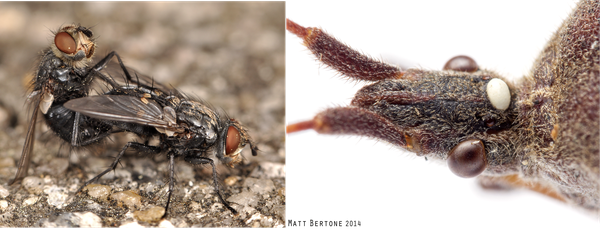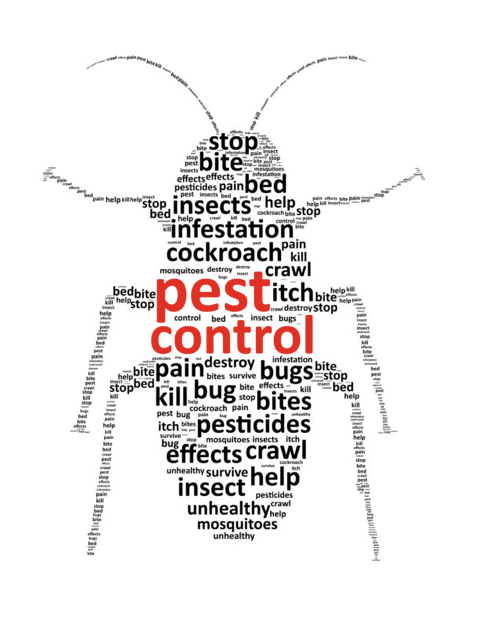Some Known Details About Eco Bed Bug Exterminators Dc
Some Known Details About Eco Bed Bug Exterminators Dc
Blog Article
Some Ideas on Eco Bed Bug Exterminators Dc You Need To Know
Table of ContentsThe Definitive Guide to Eco Bed Bug Exterminators DcThe Greatest Guide To Eco Bed Bug Exterminators DcEco Bed Bug Exterminators Dc Fundamentals ExplainedEco Bed Bug Exterminators Dc - TruthsThe Best Strategy To Use For Eco Bed Bug Exterminators Dc
Because chemicals are toxic, they are also potentially unsafe to human beings, pets, other organisms, and the environment. Consequently, people that use pesticides or on a regular basis come in call with them need to comprehend the family member toxicity, potential health and wellness results, and preventative actions to minimize direct exposure to the products they use. Threat, or danger, of using pesticides is the possibility for injury, or the degree of threat involved in using a pesticide under a provided set of conditions.
Applicators can decrease or nearly eliminate direct exposure-- and thus decrease hazard-- by adhering to the tag directions, utilizing personal safety clothes and tools (PPE), and dealing with the chemical correctly. For instance, greater than 95 percent of all chemical direct exposures originate from dermal direct exposure, mostly to the hands and lower arms. By wearing a pair of unlined, chemical-resistant gloves, this sort of exposure can be nearly eliminated.
The harmful results that happen from a solitary direct exposure by any route of entrance are described "severe results." The 4 paths of exposure are dermal (skin), breathing (lungs), dental (mouth), and the eyes. Severe toxicity is established by analyzing the facial toxicity, breathing poisoning, and dental poisoning of guinea pig.
The smart Trick of Eco Bed Bug Exterminators Dc That Nobody is Talking About
Intense poisoning is gauged as the quantity or focus of a toxicant-- the a.i.-- needed to kill 50 percent of the pets in a test population. This step is typically expressed as the LD50 (deadly dose 50) or the LC50 (deadly focus 50). Additionally, the LD50 and LC50 worths are based upon a solitary dose and are tape-recorded in milligrams of pesticide per kilo of body weight (mg/kg) of the examination pet or partly per million (ppm).
The reduced the LD50 or LC50 value of a chemical product, the greater its poisoning to people and pets. Chemicals with a high LD50 are the least harmful to human beings if made use of according to the directions on the product label. The chronic toxicity of a pesticide is figured out by subjecting guinea pig to lasting exposure to the energetic component.
The chronic poisoning of a chemical is harder than acute toxicity to identify through laboratory evaluation. Products are classified on the basis of their relative severe toxicity (their LD50 or LC50 values). Pesticides that are identified as extremely poisonous (Poisoning Category I) on the basis of either oral, dermal, or inhalation toxicity need to have the signal words risk and poisonous substance published in red with a skull and crossbones symbol plainly showed on the front panel of the bundle label.
The severe (single dosage) dental LD50 for pesticide items in this team ranges from a trace amount to 50 mg/kg. For instance, exposure of a couple of decreases of a material taken by mouth can be fatal to a 150-pound person. Some pesticide items have simply the signal word risk, which tells you nothing concerning the severe poisoning, simply that the item can create serious eye damages or serious skin inflammation
The Basic Principles Of Eco Bed Bug Exterminators Dc
In this category, the intense dental LD50 arrays from 50 to 500 mg/kg. A tsp to an ounce of this product could be deadly to a 150-pound person (bed bug treatment). Pesticide items categorized as either somewhat toxic or reasonably nontoxic (Poisoning Groups III and IV) are needed to have the signal word CAUTION on the chemical label

All chemical poisoning worths, including the LD50, can be located on the item's Product Safety and security Information Sheet (MSDS) - bed bug exterminator. Pesticide labels and MSDS can be gotten from stores or produces. On top of that, the majority of items additionally know that can be found on the web. The signs of chemical poisoning can vary from a moderate skin irritation to coma and even death.
Individuals likewise vary in their level of sensitivity to different levels of these chemicals. Some individuals may show no response to a direct exposure that might trigger serious ailment in others (bed bug heater rentals). Since of prospective health and wellness problems, chemical customers and trainers should recognize the usual indicators and signs and symptoms of chemical poisoning. The results, or symptoms, of chemical poisoning can be generally defined as either topical or systemic.
9 Easy Facts About Eco Bed Bug Exterminators Dc Described
Dermatitis, or inflammation of the skin, is approved as the most generally reported topical effect connected with pesticide direct exposure. Some individuals have a tendency to cough, hiss, or sneeze when revealed to pesticide sprays.
This signs and symptom usually subsides within a couple of mins after an individual is eliminated from the exposure this page to the irritant. A reaction to a pesticide product that triggers a person not only to sneeze and cough but also to create extreme acute respiratory symptoms is more likely to be a true hypersensitivity or allergic response.
Systemic effects are fairly various from topical results. They frequently happen away from the initial point of call as a result of the pesticide being taken in into and distributed throughout the body. Systemic results typically consist of nausea or vomiting, throwing up, tiredness, migraine, and intestinal tract disorders. In advanced poisoning cases, the individual might experience adjustments in heart rate, difficulty breathing, convulsions, and coma, which might result in fatality.
Report this page